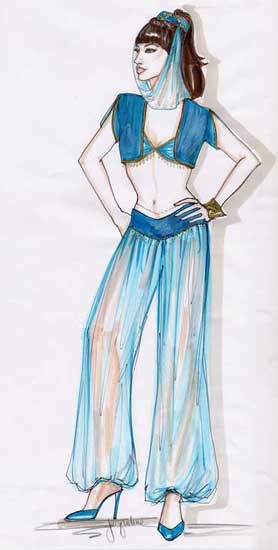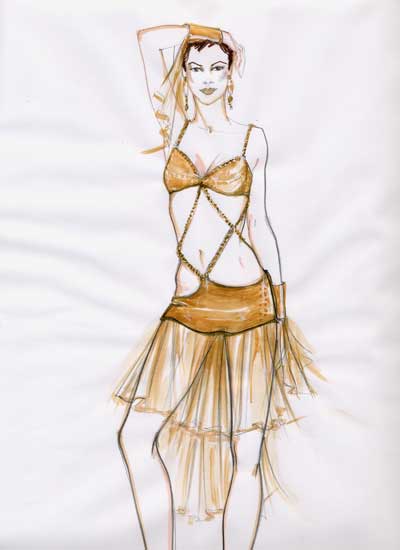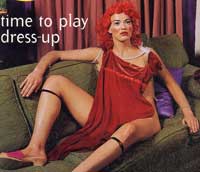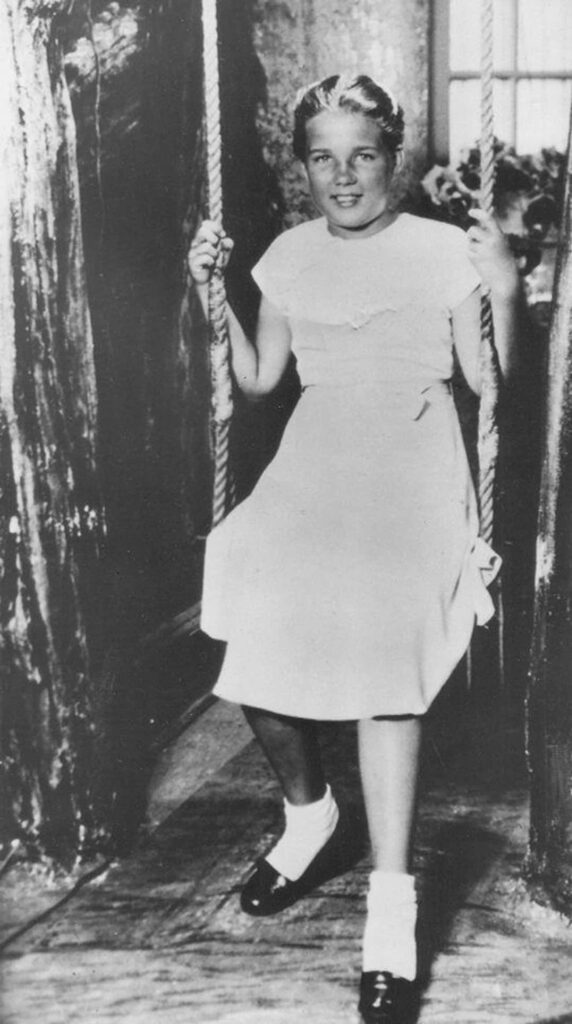by Leigh Godfrey

Okay, first off, I don’t know anything about surfing. Never done it, don’t care about it, and until about three years ago, I wouldn’t even swim in the ocean (related to a traumatic experience seeing the movie Jaws when I was seven years old, but that’s another story). So right off the bat, I have to tell you that the reason I love the movie North Shore has nothing to do with the surfing. So as long as we’ve got that out of the way, we can get started.
North Shore follows the tried and true formula (which, incidentally, I appreciate very much) of the underdog overcoming all odds to reach his goal, and perhaps learning a little something along the way. In North Shore, our hapless protagonist visits Hawaii, learns to surf and falls in love with a local girl, thereby wreaking havoc on the tried and true ways of the Island. But, think less like Romeo and Juliet—more like The Karate Kid.
But with waves.
Given that North Shore has a story by Randal Kleiser, who brought us The Blue Lagoon with a script co-written by Tim McCanlies, who is responsible for The Iron Giant, you can only guess what kind of a movie you’re getting yourself into.
Our story opens and I, for one, am immediately sucked in by the hot action shots of dudes surfing radical waves to the tune of a Pseudo Echo song. Our hero Rick Kane (Matt Adler) is one of these surfers, and lo and behold! he wins the big surf contest. That’s right, a groovy silver belt buckle and five hundred bucks. When asked what he’s going to do with his $500 prize, Rick shouts out: “I’m going to Hawaii to surf the big waves of the North Shore!” This of course seems like an excellent plan until we realize the contest Rick has won took place in a wave tank in Arizona! But you’ve got to love his ambition.
After a quick confab with his mom, we realize that Rick is not only going to Hawaii with just $500, no real surfing experience, and not knowing a soul, but he’s also forgoing his dream of becoming a graphic designer. Now, name me another movie where the main character is a graphic designer AND a surfer. Go on, I dare you.
Naïve Rick alights in Honolulu and a few extraneous things happen obviously inserted into the film to show the various sides of life in Hawaii. Briefly, Rick gets into a cab and asks to be taken to an address that was given to him by some drifter that stopped by the wave tank one day. Rick seems to think this guy will give him a place to stay. So we see him cruising the main drag of Waikiki, where neon lights and prostitutes abound. The address turns out to be a strip bar—the Hubba Hubba Room. First, Rick is hit on by a hooker who wants him to buy her a $20 glass of champagne, next, he’s dissed by his “friend,” and last, gets himself into a bar brawl.
Hawaii sure ain’t like Arizona, Rick is thinking.
This leads to Rick jumping into a Jeep with two randy Australian surfers who were at the strip club. They turn out to be professional surfers Alex Rogers (played by Robbie Page) and Mark Occhillipo (that’s “Occy” to you). For no apparent reason, these two immediately take Rick through a burning sugar cane field and make him jump out and pick some, until Rick is chased by some locals with machetes—perhaps to show the audience the truth about the Hawaiian sugar industry? Who knows? It really has no place in a surfing film, but then again, this is so much more than a surfing film.
Anyway, after all this, they end up back at a beach house heavily populated with hot babes, and it just so happens to be owned by surfing legend and Rick’s personal hero Lance Burkhart (portrayed by surf pro Laird Hamilton). This is where one of the many fine lines uttered in the film occurs: when Occy tells Alex to get into the hot tub with him, and Alex says (please put on broad Aussie accent): “Right, I love skin diving.” Classic. Just as an aside, these two surfers are obviously gay, but throughout the film they are constantly surrounded by babes, therefore taking away the subplot of big gay love that might have otherwise taken place.
The next morning, Rick goes out to catch his first big wave of the North Shore. The first sign this is a mistake is when Occy looks at Rick’s board (surfboard, that is) and says “Twinnies? No one rides twinnies here, mate.” A twinnie being a twin-finned surfboard. Rick says he’ll be okay, but poor Rick is clearly so dumb about surfing he doesn’t stand a chance. After all he doesn’t know how to “duck dive” and when he finally catches a wave it’s just “a ripple.” As Alex says: “Where’d you learn to surf, in a bathtub?” Then, Rick commits the cardinal sin of all sins; he pisses off the Hui (pronounced “hooey”). That’s right, Rick causes the Hui to wipeout and all hell breaks loose.
He returns to the beach to find “those guys in the black trunks” have stolen his stuff. Realizing they’ve hooked up with a loser, Alex and Occy quickly ditch Rick, and as he wanders aimlessly about with his board, he runs into a local surfer dude, which brings us to the main reason why I love the movie North Shore — Turtle.
Turtle, played by John Philbin with true surfer aplomb (he also starred in that other notorious surfing film, Point Break), is Rick’s entrée into the surfing world of the North Shore. It’s Turtle who informs Rick in no uncertain terms that those guys in the black trunks are the Hui, and the Hui are not to be trifled with. In fact, his exact words are: “They’re the Hui. Nobody messes with the Hui.”
Turtle is so endearing, even though he goes against everything I find attractive in a man, I can’t help but have a crush on him. He is also responsible for 90% of the great lines in this film, which, when I quote them here, must be imagined in a surfer dude accent, often ending in the word brah or a hang loose sign, or both. If you don’t know what that sounds like, please visit Scott’s North Shore Page where you can hear the actual lines themselves.
On their way to a happening Halloween party, Turtle begins to teach haole Rick a few important lessons about Hawaiian slang:
“What’s a haole?” asks Rick.
“It’s the local word for tourist,” explains Turtle.
Rick: “I’m not a tourist.”
Turtle: “Whatever, barney.”
Rick: “What’s a barney?”
Turtle: “It’s like barno, barnyard. A haole to the max. A kook, in and out of the water, yeah?”
Yeah. That sums up Rick. To the max.
Rick meets cute local girl Kiani at the party, but unfortunately she happens to be head Hui Vince Moaloaka’s cousin. So you know that’s going to be trouble. Since Rick doesn’t have a place to stay, he asks Turtle if he can crash at the shaping shack where Turtle works, sanding surfboards for the enigmatic Chandler, master board shaper and “soul surfer,” who is played by Gregory Harrison. Best known for his role as Dr. “Gonzo” Gates in the ’70s TV series Trapper John M.D., this is one of only a handful of films you’ll see Harrison in that aren’t movie-of-the week related.
Lance Burkhart shows up at the party looking like Rocky from the Rocky Horror Picture Show and demands Chandler have his surfboard ready by the next morning, so Turtle and Rick return to the shaping shack to sand Lance Burkhart’s board.
The next day, the waves are really cranking at Pipeline so Turtle and Rick hit the surf with disastrous results, even though Turtle had given Rick all the info he needed to know about surfing Pipeline: “There’s a reef that starts here and goes all the way down there. So when the wave breaks here, don’t be there . . . or you’re gonna get drilled.”
Rick, of course, bites it big time, breaks his board and scrapes up his back on the reef. Kiani comes riding up the beach at this inauspicious moment and exclaims: “You’ll get reef rash if you don’t put something on those cuts.”
If you’re unaware of the dangers of reef rash, rest assured that a little aloe will cure you.
At this point, everyone is pretty much embarrassed by Rick, and now that his surfboard is busted and the Hui stole all of his stuff, he hasn’t got a lot left. He goes back to the shaping shack with Turtle. Chandler walks in toting a set of drawing pencils, which he has just purchased at a pawnshop. Rick exclaims they are the ones stolen from him by the Hui, and proves it by showing Chandler a watercolor he did of a dude surfing the big waves of the North Shore. Chandler agrees to give Rick a place to stay and a job sweeping up the shaping shack in exchange for the painting, which he then gives to his wife. Awww.
After discovering Rick is pretty much a menace to surfing society, Chandler decides to teach him about the waves, so he can become a true “soul surfer.” Rick learns to surf in a brief montage set to some lame song that sounds not unlike that song played over the karate contest montage in The Karate Kid. I’d like to interject here, what is it about these 80s movies soundtracks? Any movie geared toward teenagers that was made in the 80s had the worst music. Obviously, the concept of licensing popular songs for soundtracks was not thought of back then, with John Hughes being the lone possible exception. And even he had a few major missteps (Belouis Some, anyone?).
Back to Rick’s learning to surf montage. It is intercut with scenes of Rick sketching various drafts for Chandler Surfboards’ new logo. Apparently, as his surfing improves, so do his design skills. After going through many incarnations, the logo ends up looking exactly like the painting Rick had given to Chandler in the first place, so I’m not quite sure why he went to all the trouble.
While Rick is learning to surf, this creepy guy with a floppy canvas hat takes a bunch of pictures of him and convinces Rick that he can be as successful as Lance Burkhart. Naturally, he’ll have to enter and do well in a big surf contest such as the conveniently located Pipeline Classic. In the meantime, Rick has managed to hitch a ride out to some remote part of the island where Kiani lives. While there he indulges in some Hawaiian activities. He attends a luau, watches Kiani hula dance and gets into a fight with the Hui who stole his stuff, thereby regaining his honor and his cool silver surfboarder belt buckle. Kiani and Rick have a little love scene on the beach, and head Hui Vince decides Rick isn’t such a bad haole after all.
At this point, you may be wondering (as am I) where the heck is Turtle? Well, poor Turtle is sanding away for Chandler, all the while nurturing his own ambitions to be a master shaper. He even has a “big gun” tucked away in a closet, that he’s made all by himself, but is too afraid to show to Chandler. And his bitter resentment of favorite son Rick is growing stronger:
Turtle: “I hear Chandler’s trying to teach you how to shape.”
(Rick nods)
Turtle (sullenly): “I’ve been his sander for five years, Chandler teach me how to shape? Not even. Chandler ask me home for dinner? Not. Coach me how to big wave surf? No way.”
Rick: “Look, maybe it’s because we have this design thing in common.”
Turtle (scoffing): “Yeah, right — design thing. Design me out of the picture, haole. Here on the North Shore we treat friends mo betta.”
Poor Turtle!
Back at the beach, Rick decides to enter the Pipeline Classic, much to the chagrin of mentor Chandler, who derisively exclaims: “Go ahead. Go shred.” (I once again ask you to recall The Karate Kid, and how Arnold from Happy Days was really upset that Ralph Macchio wanted to enter that karate contest to fight the guys from the Cobra Kai. It’s just like that.) See, Chandler’s 60s surfing sensibility doesn’t jibe with the 80s “hot-doggers” like the Lance Burkhart’s of the world. But Rick needs to find his balance (just like Ralph Macchio) so he first rectifies the situation between Turtle and Chandler by stealing Turtle’s surfboard and giving it to Chandler. Chandler is so impressed, he goes surfing with it and we get to see some of Gregory Harrison’s big moves. Creepy guy in floppy hat asks Turtle: “Who’s that?” And Turtle proudly replies, “Chandler. On my board. That I made.”
I often wondered why we never get to see Turtle surf. He only surfs once, in the beginning, then after that he is either sanding or on the beach. We do, however, get to see him without his shirt on, a lot, so I guess I have to be satisfied with that.
So Turtle, Chandler, and Kiani all come out to see Rick surf the big contest. The soul surfing pays off and he makes it all the way to the finals and has to surf against his former idol Lance Burkhart. They match each other wave for wave, but finally, a cheating Lance Burkhart steals Rick’s final wave and foils his chances of winning. It doesn’t matter though, because Rick now knows he can hold his own with the best. And of course, Lance gets his comeuppance, as creepy guy in floppy hat has taken photos of the whole thing and Lance is humiliated in the local press the very next day.
Which, incidentally, is the day that Rick says goodbye to Turtle, Chandler, Kiani, and the big waves of the North Shore to go to New York and pursue his dream of graphic art. Kiani tells Rick she prayed to the Kahunas that Rick would come back to the North Shore. But she’s no prophet, because the film didn’t do well enough for a sequel.
Alas.
Editor’s Note: There is, however, the punch drunk love of Boarding House: North Shore.
Author’s Note: Apparently, Turtle gives surfing lessons in Malibu. Guess where I’ll be this summer?











